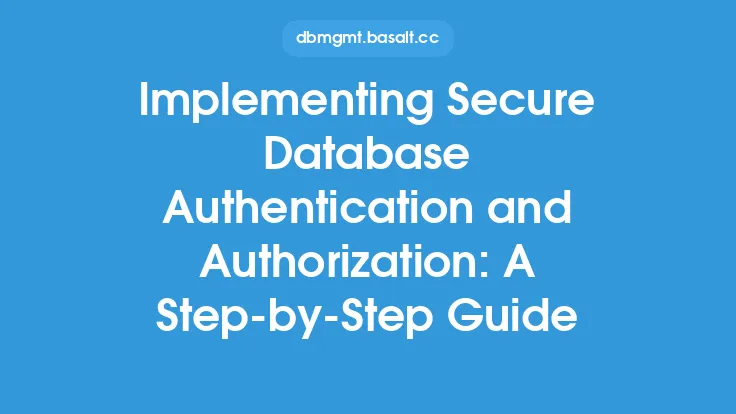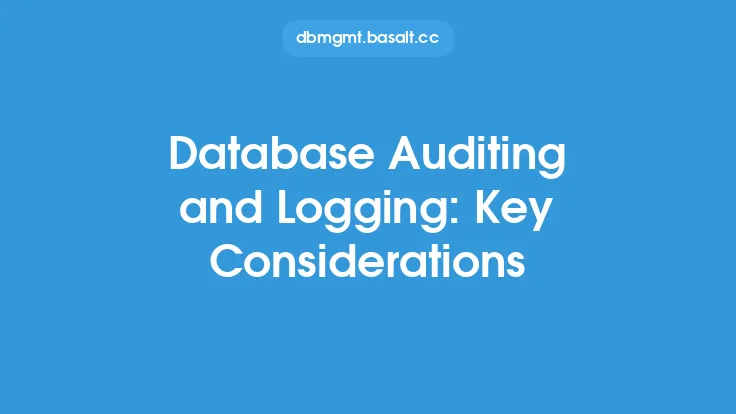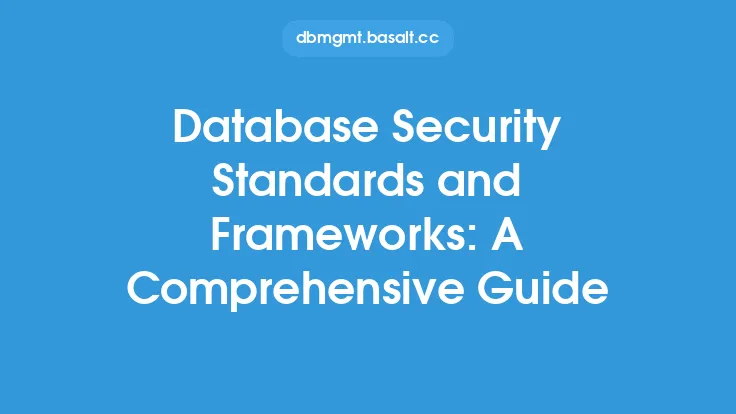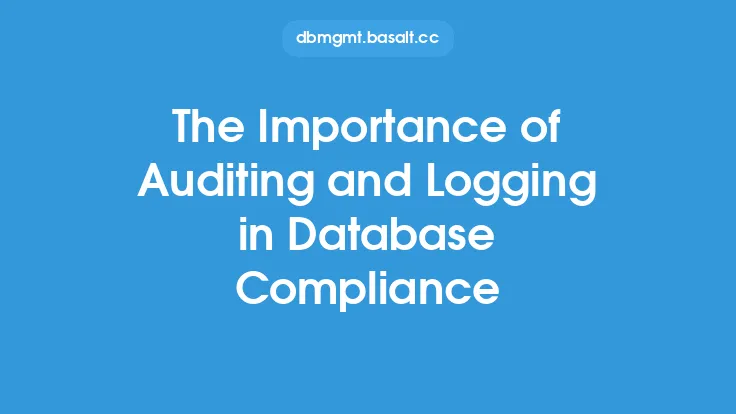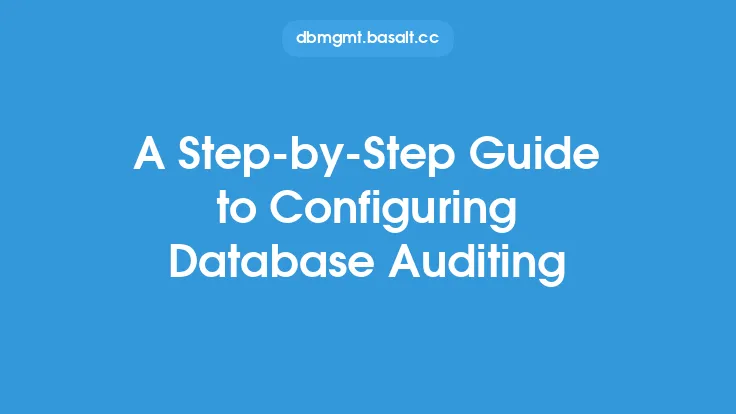Implementing a robust database auditing and logging system is a crucial aspect of database security. It allows organizations to track and monitor all activities performed on their databases, ensuring the integrity, confidentiality, and availability of sensitive data. In this article, we will delve into the world of database auditing and logging, providing a beginner's guide on how to implement these essential security measures.
Introduction to Database Auditing
Database auditing involves the process of tracking and recording all activities performed on a database, including data modifications, access attempts, and system changes. This information is typically stored in a log file or audit trail, which can be used to detect and respond to security incidents, troubleshoot issues, and comply with regulatory requirements. Effective database auditing provides a clear picture of who did what, when, and how, enabling organizations to identify potential security threats and take corrective action.
Types of Database Logging
There are several types of database logging, each serving a specific purpose. These include:
- Transaction logging: Records all changes made to the database, including insert, update, and delete operations.
- Connection logging: Tracks all connections made to the database, including successful and failed login attempts.
- Query logging: Records all queries executed on the database, including SELECT, INSERT, UPDATE, and DELETE statements.
- Error logging: Captures all error messages generated by the database, including syntax errors, permission errors, and system errors.
- Audit logging: Provides a detailed record of all activities performed on the database, including data modifications, access attempts, and system changes.
Benefits of Database Auditing and Logging
Implementing database auditing and logging provides numerous benefits, including:
- Improved security: Enables organizations to detect and respond to security incidents, reducing the risk of data breaches and cyber attacks.
- Compliance: Helps organizations meet regulatory requirements, such as PCI-DSS, HIPAA, and GDPR, by providing a clear audit trail of all database activities.
- Troubleshooting: Facilitates the identification and resolution of database issues, reducing downtime and improving overall system performance.
- Data integrity: Ensures the accuracy and consistency of data, preventing unauthorized modifications or deletions.
Best Practices for Implementing Database Auditing and Logging
To ensure effective database auditing and logging, follow these best practices:
- Configure logging parameters: Set logging parameters to capture relevant information, such as login attempts, data modifications, and system changes.
- Store log files securely: Store log files in a secure location, such as an encrypted file system or a separate logging server.
- Monitor log files regularly: Regularly review log files to detect potential security incidents, troubleshoot issues, and identify areas for improvement.
- Implement log rotation and retention: Implement log rotation and retention policies to ensure that log files are properly managed and retained for a specified period.
Tools and Technologies for Database Auditing and Logging
Several tools and technologies are available to support database auditing and logging, including:
- Native database auditing tools: Most databases provide native auditing tools, such as Oracle's Audit Vault or Microsoft's SQL Server Audit.
- Third-party auditing tools: Third-party tools, such as LogRhythm or Splunk, provide advanced auditing and logging capabilities, including log collection, analysis, and reporting.
- Logging frameworks: Logging frameworks, such as Log4j or Logback, provide a standardized approach to logging, enabling organizations to collect and analyze log data from multiple sources.
Challenges and Limitations of Database Auditing and Logging
While database auditing and logging are essential security measures, they also present several challenges and limitations, including:
- Performance impact: Database auditing and logging can impact system performance, particularly if logging parameters are not properly configured.
- Log data management: Managing large volumes of log data can be challenging, requiring significant storage and processing resources.
- Log analysis and interpretation: Analyzing and interpreting log data can be complex, requiring specialized skills and expertise.
Conclusion
Implementing database auditing and logging is a critical aspect of database security, providing a robust defense against cyber threats and data breaches. By understanding the types of database logging, benefits of database auditing and logging, and best practices for implementation, organizations can ensure the integrity, confidentiality, and availability of their sensitive data. While challenges and limitations exist, the use of native database auditing tools, third-party auditing tools, and logging frameworks can help overcome these obstacles, providing a comprehensive and effective database auditing and logging system.
